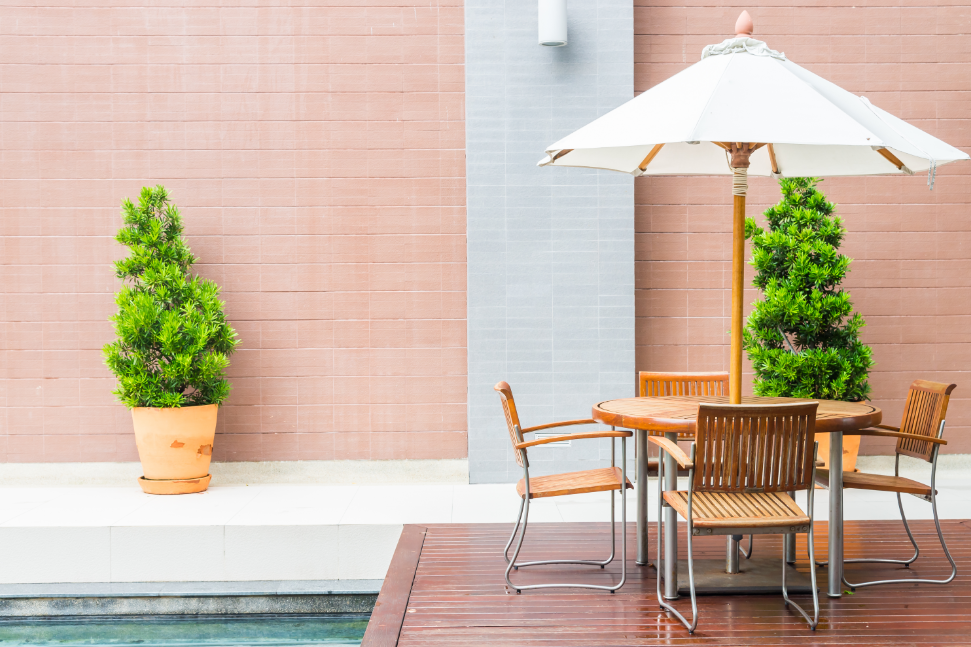
Sustainability has been gaining more attention, partly because there are many ways to incorporate it into your everyday life.
When doing the makeover of your backyard, try out some of these sustainability tips - they are more economical and don't harm the environment.
1. Choose native plants
Plants native to your region are accustomed to its climate conditions, so they are the best option for you, as they require low maintenance, less water, and less treatment with pesticides. They are also good for native wildlife that needs food and shelter.
It's best to check with the local nursery which plants would best thrive in your region.
2. Add ground cover
No need to go for traditional grass lawn - clover and moss are just as beautiful but easier to maintain. They require less water and less frequent mowing. In case you have shady areas in the backyard, cover them with moss because it won't lose its color during the summer heat.
Clover could grow in areas that get a lot of sunshine - it's resistant to drought, plus, it's great for the soil. If you let it bloom, you will also attract bees.
3. Composite decking and fencing
If you're planning to build a deck or you want to make a fence to frame the backyard, the more environmentally friendly way is to opt for composite decking and fencing. Many companies such as WoodEvo offer this type of structures because wood composite is made of reclaimed lumber and recycled plastic and is a contribution to a greener environment.
Bonus - it's also more durable than traditional wood and requires less maintenance, saving you money in the process.
4. Earth-friendly outdoor furniture
Many furniture companies and retailers are starting to focus more on offering furniture that's earth-friendly in some way. For example, many of them are using hardwood which grows in abundance, such as acacia, and wood from plantations whose goal is long-term preservation. Also, many manufacturers offer outdoor furniture made of recycled materials and composite wood, which doesn't get easily scratched, faded, or rotten.
5. Eco-hardscaping
For eco-hardscaping in the backyard, use permeable pavers instead of concrete - they allow more water to flow into the ground, and not in the sewer or a body of water.
You can also recycle bricks, concrete pieces, stone, and other hardscaping materials - let your creativity lead you.
6. Save with solar lighting
Night lights in the backyard are both important for safety and beautifying. Your night light can be solar-powered - path lights, deck lights, and spotlights. There are various types so you won't have problems finding ones matching your backyard style.
As a bonus, they don't need a cord or wires, so you can place them anywhere you want.
7. Save water
A great backyard project is to install a large water tank that will conserve water - you can hook it up to the gutters in your home and it fills with water whenever it rains. They come in smaller sizes, too, for people who don't have a lot of backyard space. You will just have to empty it more frequently.
Recycled water from the tank can be used for watering the garden, household projects, and even drinking (if you filter it). It's an environmentally friendly move but it will also save you money on the water bill.
Final comment
The beauty of sustainability ideas is that they are numerous, especially when it comes to backyard improvements.
There are so many more sustainability hacks you could introduce in your backyard - you just have to explore the options a bit. The result will be an economical and eco-friendly backyard that inspires.
Written by Alexis Walker
About the Author
Alexis is a Sydney-based part-time writer and a full-time mom of two. Her words carry the richness of her traveling and parenting adventures, and offer advice and inspiration to those who desire to improve their lives. Outside of the office, she takes pleasure in spending precious time with her youngsters and absorbing the happiness they constantly radiate. You can find her on Facebook and Twitter.
You may also like
Plants You Should Place in Your Living Room and The Ones You Shouldn’t
5 Different Ways to Add Plants to an Apartment
The Ultimate Guide to Sustainable Home Decor
Green Home Renovations: 5 Eco-Friendly Kitchen Upgrades
